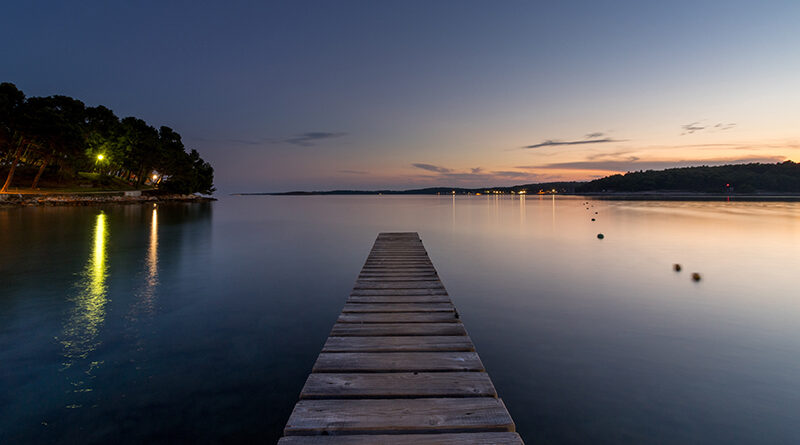Shoreline Lighting
Just How Much Do We Need?
Who doesn’t like the sight of a beautifully lit pathway, a gazebo lined with lights, or light reflecting off a dock on a calm summer’s night? While we may find this attractive, it turns out some birds, insects, mammals, amphibians, even plants may be affected by the amount of artificial light we are projecting! Plants and animals have evolved to rely on Earth’s natural cycles of light and dark. These daily cycles manage important behaviours, including reproduction, foraging, protection from predators, migration and sleep.
As we continue to light up the night, we may be significantly (and potentially negatively) impacting these behaviours. Research indicates that the glare produced by artificial lighting at night impacts wildlife in many ways, including:
• It can interfere with the croaking of some species of toads and
frogs. This is an important part of their breeding activities and
may result in reduced populations.
• Red-backed Salamanders may reduce the amount of time they
spend foraging at night as studies suggest they spend more
time hiding in leaf litter rather than looking for food.
• Birds, used to flying by the light of the moon and stars when
migrating, can become disoriented and fly off course.
• Insect numbers are declining for several reasons, and artificial
lighting isn’t helping – it’s a fatal attraction for many insects.
• Some fish species are sensitive to light pollution – it can affect
their migratory behaviours and make them more vulnerable to
predation.
• The retention of leaves, an earlier start to buds opening in spring,
and the production of fewer flower heads has been documented
in some plant species.
However, this doesn’t mean we have to get rid of all our outdoor lighting. Perhaps we don’t need as many or perhaps the lighting can be retrofitted to reduce the glare. Ask yourself:
• Does the area really need to be lit?
• Does it need to be that bright?
• Is the light transmitted further than it needs to be?
Perhaps all you need to do is:
• Turn off the lights when they’re not needed.
• Reduce your use of blue lights and use warm light sources. It should have a colour temperature of no more than 3000 Kelvins.
• Use “full cut-off” or “fully shielded” lighting fixtures. This keeps light from being emitted directly into the sky.
• Use lighting that is certified as Dark Sky Friendly Outdoor Lighting. This ensures it’s low colour temperature and is fully shielded.
• Use timers, motion sensors and dimmers.
Let’s strike a balance with our wildlife neighbours! We can still use lights, let’s just do it in a wildlife friendly way!
For more information on how you can
show your lake some love, visit
www.LoveYourLake.ca. Love Your Lake
is a shoreline naturalization program
developed by the Canadian Wildlife
Federation and Watersheds Canada.




